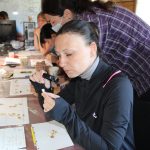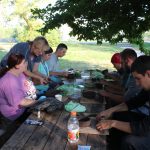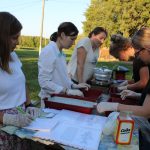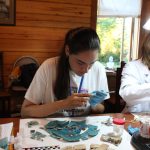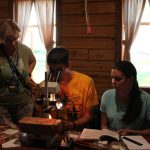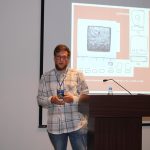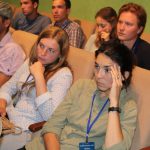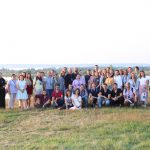International youth scientific and practical conference “Interdisciplinary research in archaeology: achievements and challenges”
On August 27, the International youth scientific and practical conference “Interdisciplinary research in archaeology: achievements and challenges” was held at the museum and exhibition complex “Memorial Sign for the Adoption of Islam by the Volga Bulgarians in 922” of the Bolgar State Historical and Architectural Museum-Reserve. This event traditionally completed the work of the IX International archaeological school in Bolgar, which was held from August 15 to 28, 2022.
During the School’s work students could get acquainted with training programs in such areas as “Archaeozoology”, “Ancient ceramics: history, technology, restoration”, “Paleoanthropology”, “Restoration of archaeological items”. The program of the sections was aimed at mastering basic knowledge and skills of working with a particular material, as well as applying them in practice. The most important condition for learning at School is the conversion of knowledge into skills, because without practical training it is difficult to fully consolidate the acquired knowledge, as well as to assess the success of their development. So, in the section “Archaeozoology”, the participants were able to determine the bone remains of animals, the listeners of the section “Ancient ceramics: history, technology, restoration” prepared plastic raw materials with their own hands, made ceramic products and burned them in the hearth, and also viewed a collection of patterns under a microscope. This year there was an unusually large number of listeners in the section “Paleoantropology”. This is due to the fact that this year the section was held in two groups – beginners and continuing. For beginners, this was the first acquaintance with this sphere, they got the first ideas about osteometry, craniology, odontology, learned how to determine the sex and age of the remains. The second group studied according to an in-depth program – mastered some more complex methods of working with paleoanthropological material. In the section “Restoration of archaeological items”, the participants got acquainted with all stages of conservation and restoration of objects made of non-ferrous metal and ceramics. Each student could apply the knowledge gained during the restoration of archaeological items, for which they also compiled restoration passports.
At the final conference, the participants shared the results of their scientific research, which covered a wide range of problems – from the Ancient Egyptian burial rite to geoinformation technologies. All the reports aroused keen interest among the participants of the archaeological school.



